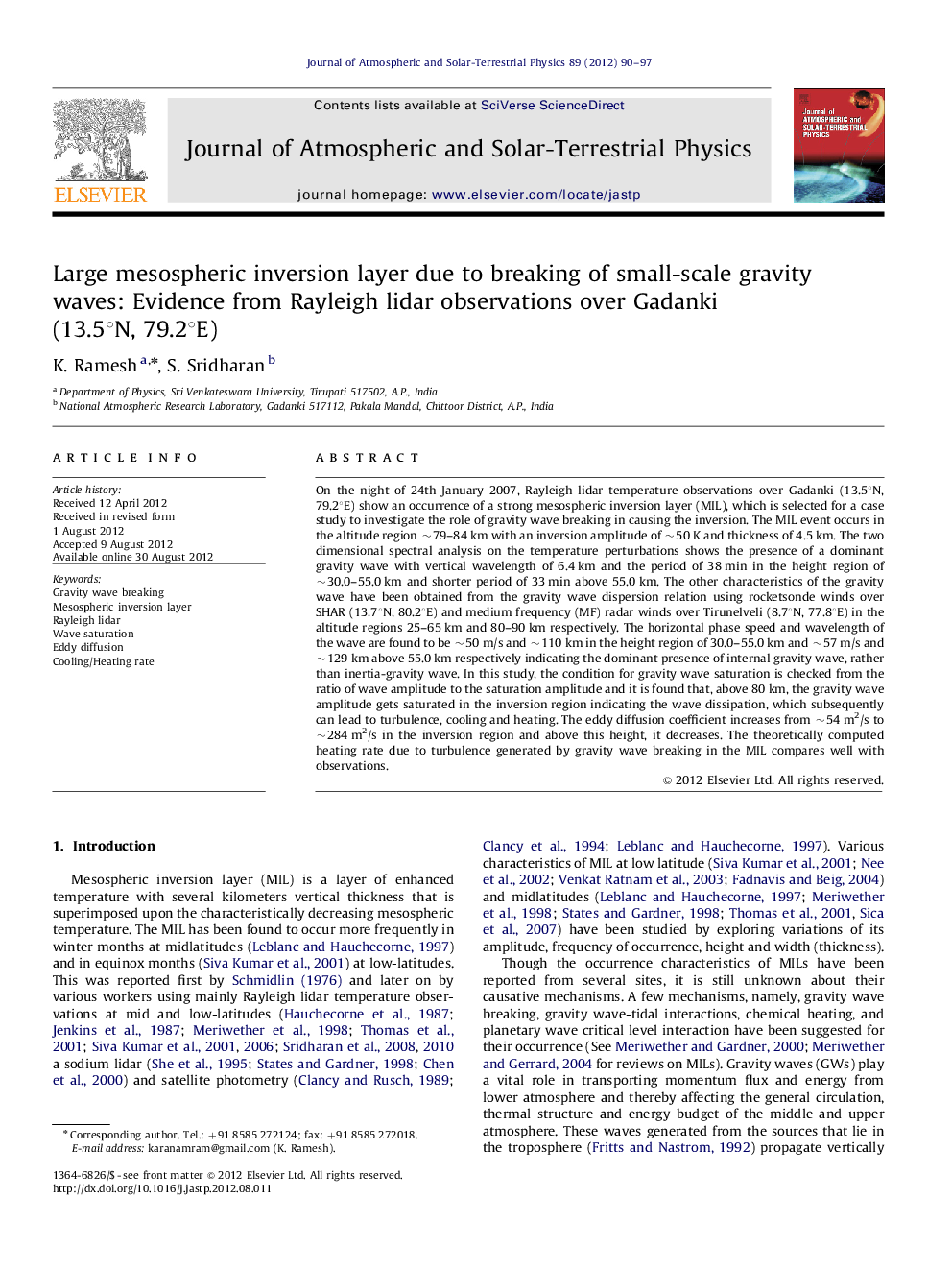| کد مقاله | کد نشریه | سال انتشار | مقاله انگلیسی | نسخه تمام متن |
|---|---|---|---|---|
| 1776879 | 1523645 | 2012 | 8 صفحه PDF | دانلود رایگان |
عنوان انگلیسی مقاله ISI
Large mesospheric inversion layer due to breaking of small-scale gravity waves: Evidence from Rayleigh lidar observations over Gadanki (13.5°N, 79.2°E)
دانلود مقاله + سفارش ترجمه
دانلود مقاله ISI انگلیسی
رایگان برای ایرانیان
موضوعات مرتبط
مهندسی و علوم پایه
علوم زمین و سیارات
فیزیک زمین (ژئو فیزیک)
پیش نمایش صفحه اول مقاله

چکیده انگلیسی
On the night of 24th January 2007, Rayleigh lidar temperature observations over Gadanki (13.5°N, 79.2°E) show an occurrence of a strong mesospheric inversion layer (MIL), which is selected for a case study to investigate the role of gravity wave breaking in causing the inversion. The MIL event occurs in the altitude region â¼79-84 km with an inversion amplitude of â¼50 K and thickness of 4.5 km. The two dimensional spectral analysis on the temperature perturbations shows the presence of a dominant gravity wave with vertical wavelength of 6.4 km and the period of 38 min in the height region of â¼30.0-55.0 km and shorter period of 33 min above 55.0 km. The other characteristics of the gravity wave have been obtained from the gravity wave dispersion relation using rocketsonde winds over SHAR (13.7°N, 80.2°E) and medium frequency (MF) radar winds over Tirunelveli (8.7°N, 77.8°E) in the altitude regions 25-65 km and 80-90 km respectively. The horizontal phase speed and wavelength of the wave are found to be â¼50 m/s and â¼110 km in the height region of 30.0-55.0 km and â¼57 m/s and â¼129 km above 55.0 km respectively indicating the dominant presence of internal gravity wave, rather than inertia-gravity wave. In this study, the condition for gravity wave saturation is checked from the ratio of wave amplitude to the saturation amplitude and it is found that, above 80 km, the gravity wave amplitude gets saturated in the inversion region indicating the wave dissipation, which subsequently can lead to turbulence, cooling and heating. The eddy diffusion coefficient increases from â¼54 m2/s to â¼284 m2/s in the inversion region and above this height, it decreases. The theoretically computed heating rate due to turbulence generated by gravity wave breaking in the MIL compares well with observations.
ناشر
Database: Elsevier - ScienceDirect (ساینس دایرکت)
Journal: Journal of Atmospheric and Solar-Terrestrial Physics - Volume 89, November 2012, Pages 90-97
Journal: Journal of Atmospheric and Solar-Terrestrial Physics - Volume 89, November 2012, Pages 90-97
نویسندگان
K. Ramesh, S. Sridharan,